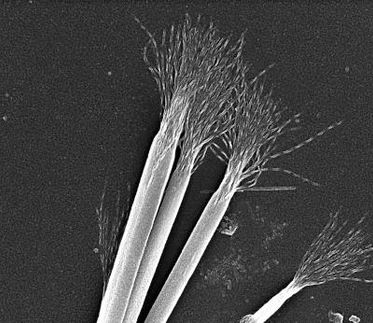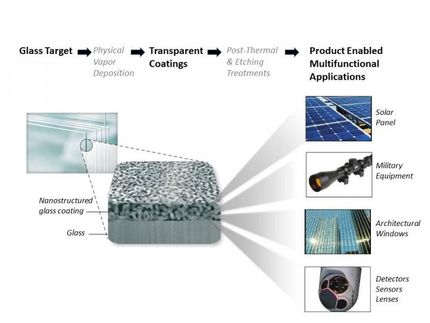Using invisibility to increase visibility
Research into the development of invisibility devices has spurred two physicists' thought on the behaviour of light to overcome the seemingly intractable problem of optical singularities which could soon lead to the manufacturing of a perfect cat's eye.
A research paper published in a New Journal of Physics' focus issue 'Cloaking and Transformation Optics' called 'The Transmutation of Singularities in Optical Instruments', written by Thomas Tyc, Masaryk University, and Ulf Leonhardt, the University of St. Andrews and Singapore National University, shows that it is possible to reflect light from all directions.
Cat's eyes and glow-in-the-dark clothing are effective because they send light back from where they came to either provide direction to a driver on the road or alert drivers of, say, a cyclist's presence but although this works well for light from some angles, it does not work well for all.
When light is shone through a glass of water with a straw in it and it appears as though the straw is bent, it is because the speed of light has been affected by the glass and the water that the light has been obstructed by. Physicists measure the effect that materials have on light using the refractive index, with 1 as the speed of light unobstructed in air, and, approximately, 1.5 as the point on the index when light meets glass and water.
What happens however when the material forces light down to zero or shoots it up to infinity on the refractive index? These are called optical singularities and have long been thought impossible to produce but it is what physicists need to understand to create a material that can reflect light from all directions and thereby create the perfect cat's eye.
Tyc and Leonhardt use ideas from one of the latest trends of optics called transformation optics to transmute the infinity mark on the refractive index into something more practical. Put simply, the scientists have developed a recipe of materials to create optical illusions – some can be used for invisibility devices, others to make things perfectly visible.
As Tyc and Leonhardt write, "Our method works for optical singularities which are the curse of physics, often seeming intractable, but we have found a way of transmuting optical singularities with just harmless crystal defects as a side-effect."
Applications will probably first appear in wireless technology and radar, for electromagnetic microwaves instead of light, because the required materials for electromagnetic microwaves are easier to manufacture.
Most read news
Organizations
Other news from the department science

Get the chemical industry in your inbox
By submitting this form you agree that LUMITOS AG will send you the newsletter(s) selected above by email. Your data will not be passed on to third parties. Your data will be stored and processed in accordance with our data protection regulations. LUMITOS may contact you by email for the purpose of advertising or market and opinion surveys. You can revoke your consent at any time without giving reasons to LUMITOS AG, Ernst-Augustin-Str. 2, 12489 Berlin, Germany or by e-mail at revoke@lumitos.com with effect for the future. In addition, each email contains a link to unsubscribe from the corresponding newsletter.
Most read news
More news from our other portals
Last viewed contents
Mercury(II)_fulminate

Artificial intelligence for better diagnostics - Standardized methods facilitate the evaluation of Raman spectra

Using strain to tune a new quantum material

Why some bubbles move faster - Why do large gas bubbles in viscoelastic liquids rise so much faster than expected?
Deep_Heat_(Heat_rub)

Researchers overview recent progress and challenges in silicon-based anode materials for lithium-ion batteries
BOH_(psychedelic)

TOC & Water Analysis | TOC analysers | Elementar Analysensysteme



























































